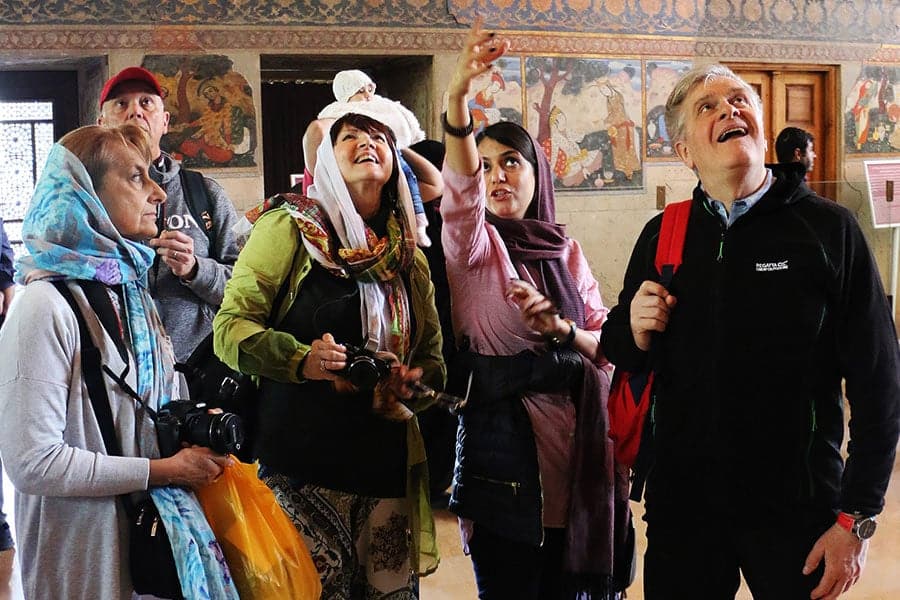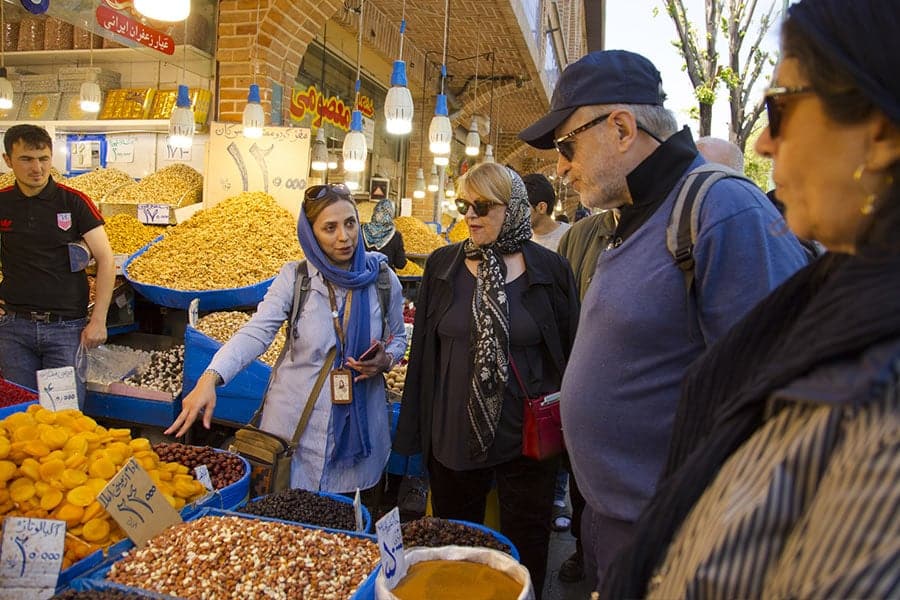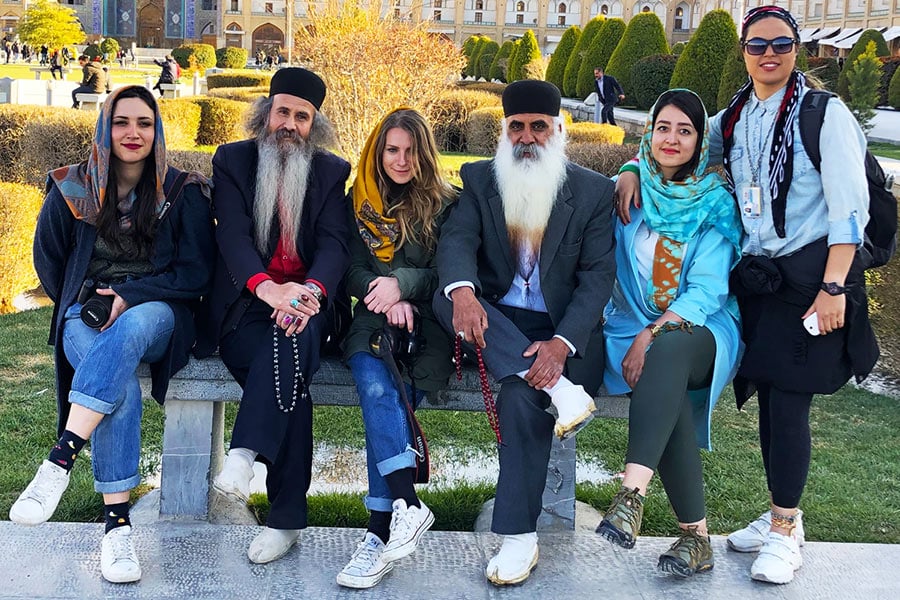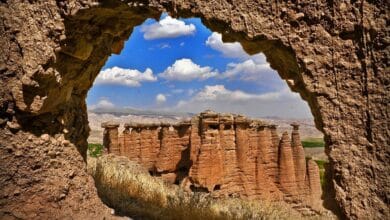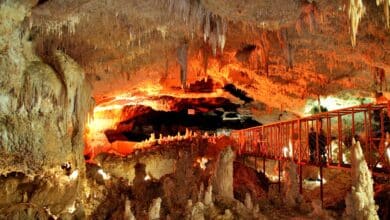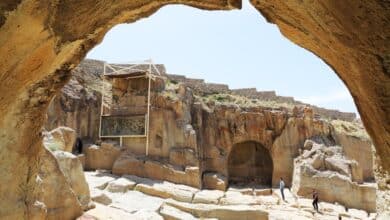The Dome of Soltaniyeh: An Ultimate Guide for Travellers
A Fascinating Dive into Zanjan's Enigmatic Dome

The Dome of Soltaniyeh stands as a monumental achievement in the realm of Islamic architecture, marking a pivotal point in its historical and artistic development.
Constructed in the early 14th century in the province of Zanjan, this architectural marvel is one of the earliest examples of the double-shelled dome in Iran, showcasing innovative engineering and exquisite decorative crafts.
Its design and construction techniques exerted a profound influence on the development of building structures in central and western Asia, bridging the gap between the Seljuk phase and the Timurid period.
The Dome of Soltaniyeh is not just a building; it is a cornerstone in the history of Islamic architecture, demonstrating the ingenuity and artistic sensibilities of the era.
Contents
Overview of the Ilkhanid Dynasty
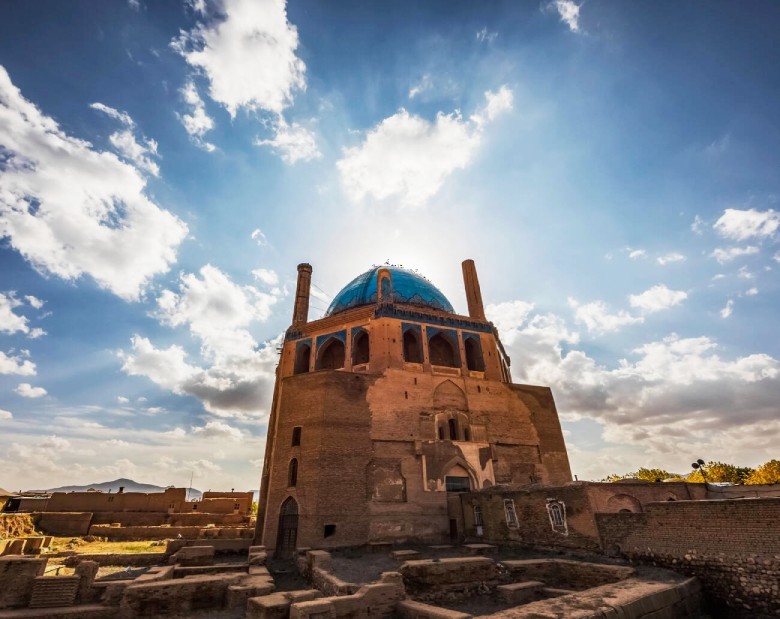
The Ilkhanid Dynasty, founded by the Mongols, played a crucial role in the cultural and political history of Iran.
Soltaniyeh, established as the empire’s capital under the reign of Oljaytu, emerged as a focal point of Ilkhanid power and architectural innovation.
This era witnessed the flourishing of arts, sciences, and architecture, with the Dome of Soltaniyeh epitomizing the dynasty’s architectural ambition and skill.
As the capital, Soltaniyeh was the heart of a vast empire, serving as a hub for administrative, religious, and economic activities.
The city’s strategic and cultural significance during the Ilkhanid period underscores its importance in Persian history, offering insights into the architectural and urban planning achievements of the time.
This guide aims to explore the architectural and historical significance of the Dome of Soltaniyeh and the role of the Ilkhanid Dynasty in shaping the landscape of Persian architecture.
Through this exploration, readers will gain a deeper understanding of the dome’s place in the world of Islamic architecture and the pivotal moments in the history of the Ilkhanid Empire.
Historical Context
The Mongol Influence in Persia: From Conquest to Cultural Integration

The Mongol invasion of Persia, initially marked by destruction and conquest, gradually transitioned into a period of profound cultural integration.
This transformation significantly influenced Persian society, politics, and, notably, architectural practices. The establishment of the Ilkhanid Dynasty by the Mongols introduced new dynamics into the Persian realm, blending Mongol administrative efficiency with the rich Persian cultural heritage.
This fusion fostered an era of unprecedented artistic and architectural innovation, with the Dome of Soltaniyeh emerging as a symbol of this syncretic cultural landscape.
The monument reflects the Mongols’ transition from conquerors to patrons of Persian art and architecture, illustrating how cultural integration can lead to remarkable outcomes in the realm of architectural development.
Oljaytu’s Vision: The Conception of Soltaniyeh’s Grand Monument
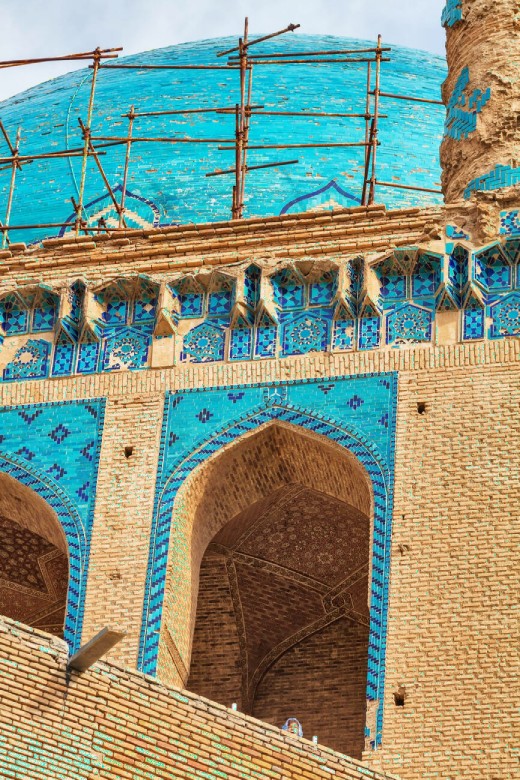
Oljaytu’s decision to erect the Dome of Soltaniyeh was driven by a vision to commemorate his reign and establish a lasting legacy.
This ambitious project was not just an architectural venture but a statement of power, faith, and artistic aspiration.
Oljaytu’s keen interest in promoting Shi’ism is intricately linked to the dome’s conception, intending it to be a mausoleum for himself and a monument reflecting his empire’s grandeur.
The Dome of Soltaniyeh stands as a testament to Oljaytu’s innovative spirit and his commitment to blending Mongol and Persian cultural elements.
This architectural masterpiece, with its innovative double-shelled dome and sophisticated decoration, showcases the height of Ilkhanid architectural accomplishment and Oljaytu’s vision of creating a monument that transcends time, serving as a bridge between different cultures and epochs.
Architectural Marvel
Design and Construction: The Ingenuity Behind the Double-Shelled Dome

The Dome of Soltaniyeh represents a pinnacle in the evolution of Islamic architecture, particularly for its pioneering double-shelled dome design.
This structural innovation not only enhanced the dome’s stability but also allowed for a breathtaking interior space, setting a precedent for future architectural endeavors in the Islamic world and beyond. The construction of this dome required extraordinary precision and ingenuity, combining robust engineering with aesthetic beauty.
The architects of the Dome of Soltaniyeh utilized advanced techniques and materials, demonstrating a deep understanding of both architectural principles and the properties of their resources.
This remarkable dome, towering at an impressive height, remains one of the most significant contributions to the architectural heritage of Iran, reflecting the skill and vision of its creators.
Decorative Elements: Understanding the Intricacies
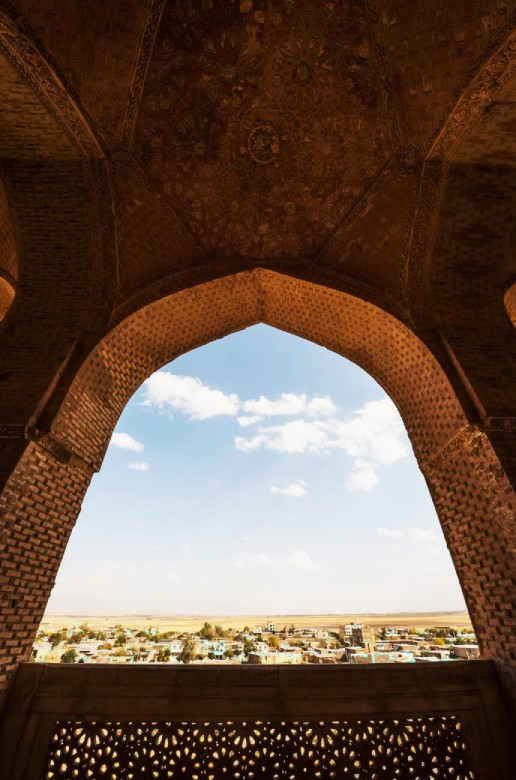
The Dome of Soltaniyeh is not only celebrated for its structural innovations but also for its intricate decorative elements.
The interior and exterior surfaces are adorned with an array of materials and techniques, including faience tiles, brickwork, stucco, and frescoes, each telling a story of the artistic fervor of the Ilkhanid period.
The use of vibrant colors and geometric patterns creates a visual symphony that enhances the spiritual and aesthetic experience of the observer.
These decorative motifs are not mere embellishments but integral components of the dome’s architectural philosophy, embodying the unity of form and function.
The meticulous attention to detail in these decorations underscores the monument’s role as a symbol of Ilkhanid cultural and religious identity, showcasing the empire’s artistic achievements.
Cultural and Religious Significance
A Mausoleum for an Empire
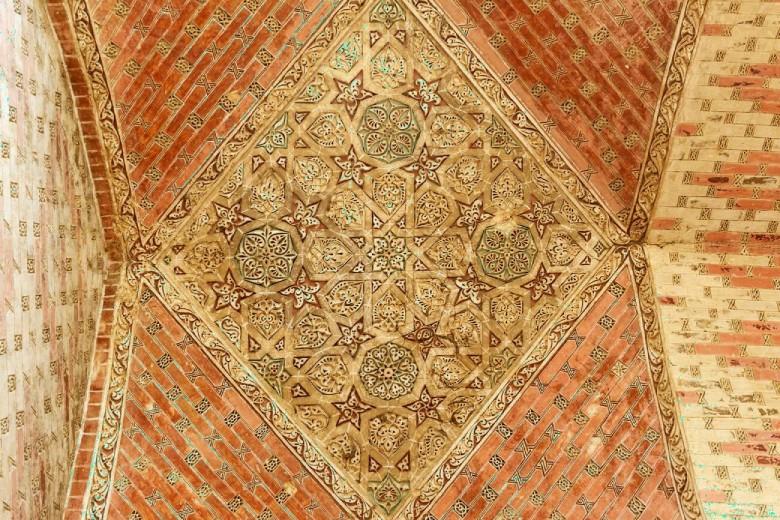
The Dome of Soltaniyeh transcends its architectural grandeur to serve as a profound symbol of the Ilkhanid Empire’s legacy. Designed as a mausoleum for Oljaytu, this monumental structure reflects the aspiration to link the empire’s might with divine eternity.
The dome’s function as a sepulchre elevates its status from a mere architectural feat to a sacred space, encapsulating the empire’s achievements, ambitions, and religious fervor.
The interment of Oljaytu within this dome signifies the intertwining of political power and spiritual authority, showcasing the dome as a pivotal nexus between earthly rule and celestial aspirations.
This dual role underscores the dome’s significance in preserving the cultural and religious heritage of the era, making it a vital monument in the annals of Islamic history.
Soltaniyeh and Shi’ism: Religious Undertones in Architectural Grandeur
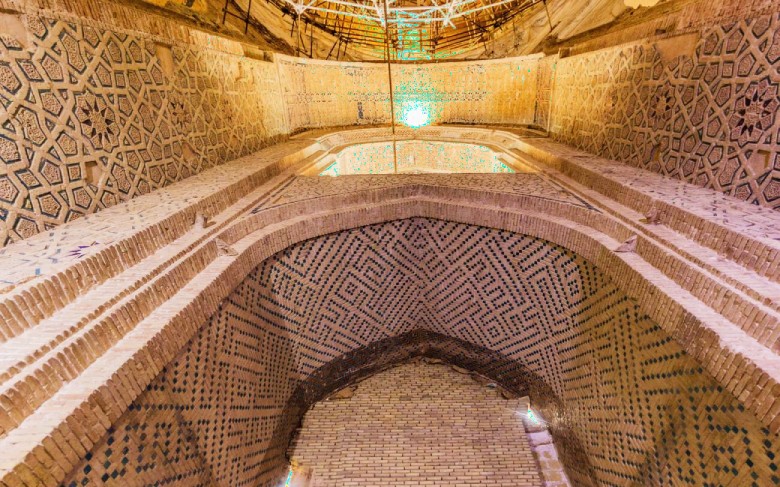
The Dome of Soltaniyeh stands as a testament to the intricate relationship between architecture and religion, particularly reflecting the embrace of Shi’ism under Oljaytu’s reign.
The architectural elements and decorative motifs of the dome carry subtle yet profound undertones of Shi’ism, serving as a manifest expression of the Ilkhanid dynasty’s religious orientation.
The use of specific symbols and inscriptions within the dome’s design articulates a narrative of Shi’a beliefs, embedding religious significance into the very fabric of the structure.
This alignment with Shi’ism not only marks a significant shift in the religious landscape of the period but also illustrates how architecture can serve as a canvas for theological and spiritual expression.
The dome, in its majestic presence, bridges the realms of art, architecture, and religion, offering insights into the cultural dynamics and religious sentiments of the Ilkhanid era.
Preservation and Legacy
Conservation Efforts: Protecting a World Heritage Site
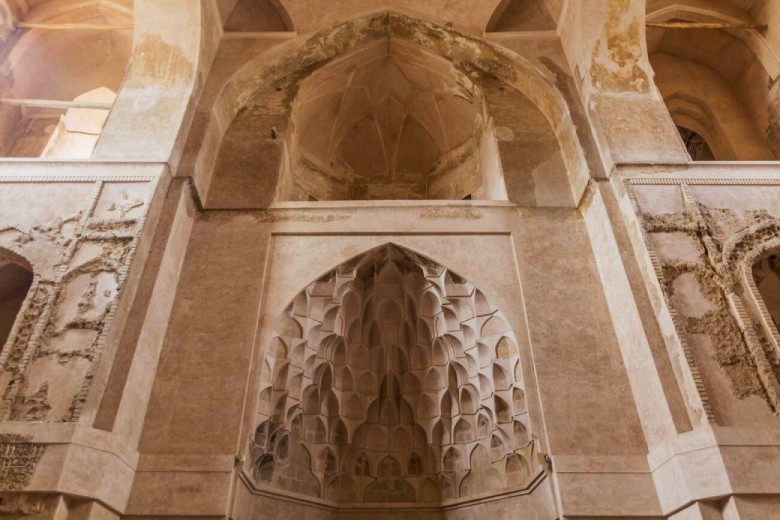
The Dome of Soltaniyeh, recognized as a UNESCO World Heritage Site, has been the focus of significant conservation efforts aimed at preserving its architectural integrity and historical value.
These efforts encompass a range of activities, from structural reinforcement to the meticulous restoration of its decorative elements.
Specialists and conservationists employ both traditional techniques and modern technology to address the challenges posed by environmental factors and aging.
The goal is to ensure that this masterpiece of Islamic architecture continues to stand as a testament to the Ilkhanid dynasty’s architectural innovation and cultural achievements.
The global recognition of the dome not only highlights its importance but also mobilizes international support for its preservation, ensuring that it remains a source of inspiration and education for future generations.
The Dome’s Influence: From Persian Architecture to the Renaissance
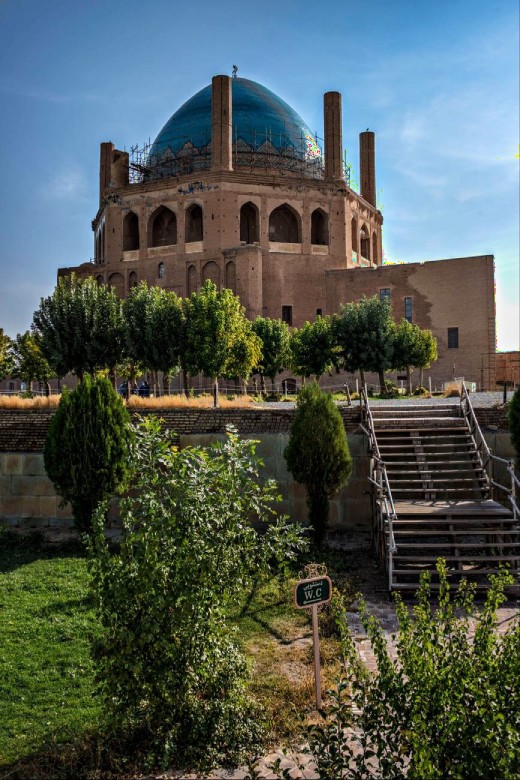
The Dome of Soltaniyeh has exerted a profound influence on architectural developments far beyond the borders of Persia.
Its innovative double-shelled dome construction inspired subsequent architectural designs in the Islamic world and was studied by architects involved in the Renaissance.
The dome’s structural ingenuity and aesthetic appeal served as a benchmark for architects seeking to push the boundaries of dome construction, culminating in the creation of iconic structures in the Western world.
This cross-cultural architectural dialogue underscores the universal value of the Dome of Soltaniyeh as a source of inspiration and technical reference.
Its legacy is evident in the domes and arches that grace the skylines of cities around the world, bridging cultures and epochs through the universal language of architectural excellence.
Planning Your Visit
Best Time to Visit
The ideal time to visit the Dome of Soltaniyeh is during spring (March to May) and autumn (September to November), when the weather is mild, and the natural surroundings are at their most beautiful.
Getting There
Soltaniyeh is located in Zanjan Province, roughly a 240 km drive from Tehran. The most convenient way to visit is by car or bus from Zanjan city, which is well-connected to major cities in Iran.
Entry Requirements
The dome is open to visitors every day, with a small entry fee. Hours may vary by season, so it’s advisable to check locally for the most current information.

Tips for Travelers
- Guided Tours: Consider joining a guided tour to gain deeper insights into the dome’s history, architecture, and cultural significance.
- Photography: The dome’s exterior and interior offer stunning photographic opportunities. However, be respectful of any photography restrictions inside the monument.
- Dress Code: Iran observes conservative dress codes. Visitors should dress modestly, covering arms and legs, and women are required to wear a headscarf.
- Local Etiquette: Remember to remove your shoes before entering the dome’s interior spaces.
Beyond the Dome
While the Dome of Soltaniyeh is the highlight, the surrounding area and the city of Zanjan offer additional attractions:
- Soltaniyeh Surroundings: Explore the ancient ruins around the dome, including remnants of the Ilkhanid city.
- Zanjan City: Known for its traditional bazaars, handicrafts, and the Rakhtshoykhaneh Museum, Zanjan makes for an intriguing cultural excursion.
Book Services, Pay Online
Conclusion
The Dome of Soltaniyeh in Modern Times
In the contemporary world, the Dome of Soltaniyeh continues to stand as a beacon of resilience and beauty, transcending centuries of history to remain a significant landmark in Iran.
Its enduring presence is a testament to the ingenuity and vision of its creators, embodying the rich cultural and architectural heritage of the Ilkhanid era.
As a UNESCO World Heritage Site, it attracts scholars, architects, and tourists from around the globe, drawn to its historical significance and architectural brilliance.
The dome’s survival through the vicissitudes of time serves as a reminder of the lasting value of cultural preservation and the universal appeal of beauty and innovation in architecture.
In modern times, the Dome of Soltaniyeh not only commemorates a glorious past but also symbolizes hope for the future, inspiring ongoing efforts to safeguard our global heritage for generations to come.

Appendix
Timeline of the Ilkhanid Dynasty and the Dome’s History
- 1256: Establishment of the Ilkhanid Dynasty by Hulagu Khan.
- 1302-1312: Construction of the Dome of Soltaniyeh under Oljaytu’s reign.
- 2005: Inscription of the Dome of Soltaniyeh as a UNESCO World Heritage Site.
- Present: Ongoing conservation efforts to preserve the dome for future generations.
This timeline highlights key moments in the history of the Ilkhanid Dynasty and the Dome of Soltaniyeh, underscoring the monument’s historical and cultural significance.
Glossary of Architectural and Historical Terms
- Double-Shelled Dome: An architectural feature where the dome is constructed with two layers, enhancing structural stability and allowing for intricate interior designs.
- Ilkhanid Dynasty: A division of the Mongol Empire, ruling over Persia from the 13th to the 14th century.
- UNESCO World Heritage Site: A landmark or area selected by the United Nations Educational, Scientific and Cultural Organization for having cultural, historical, scientific, or other forms of significance.
Read More
